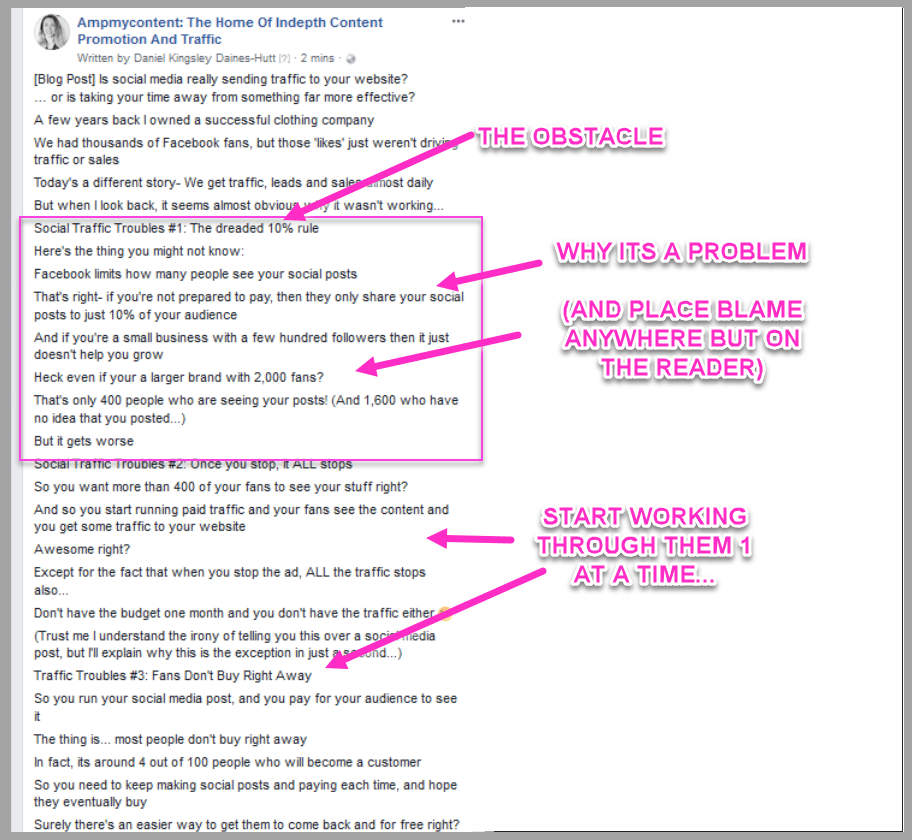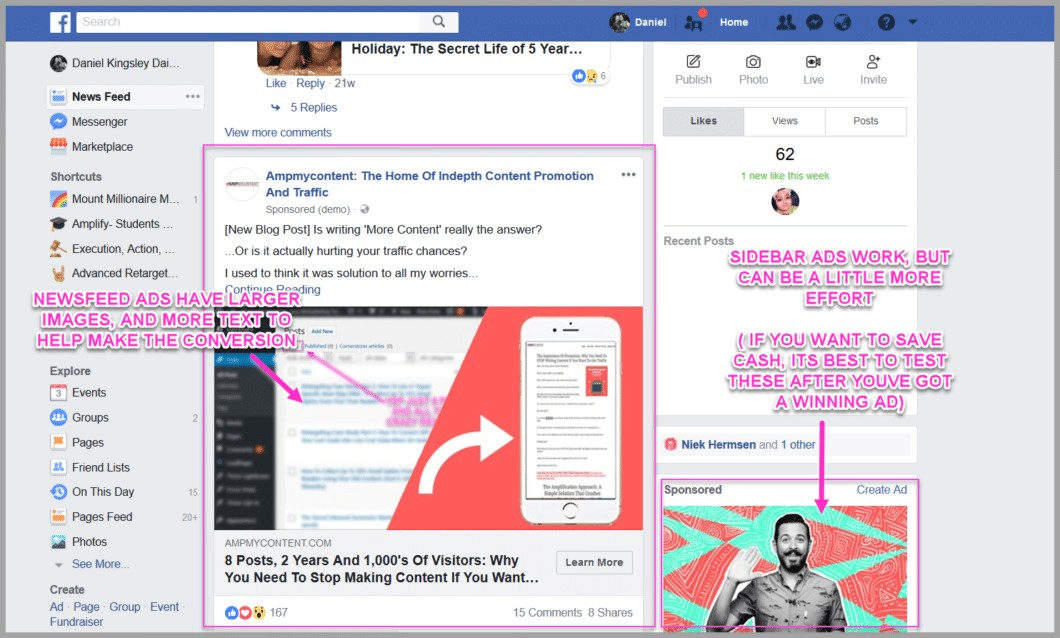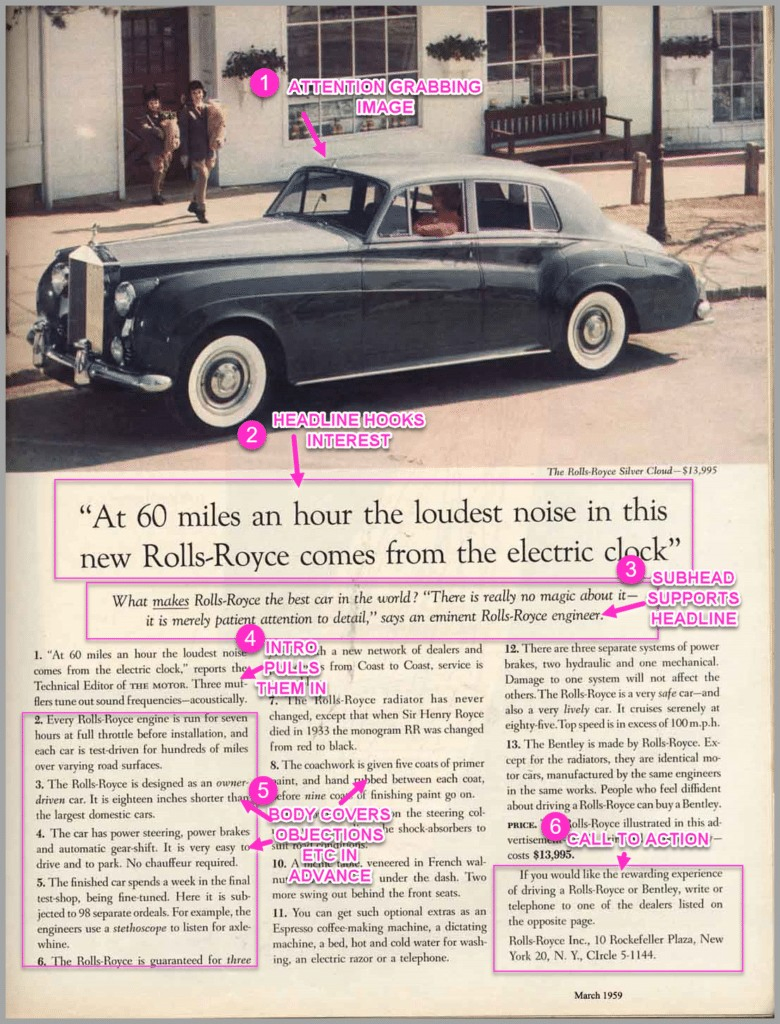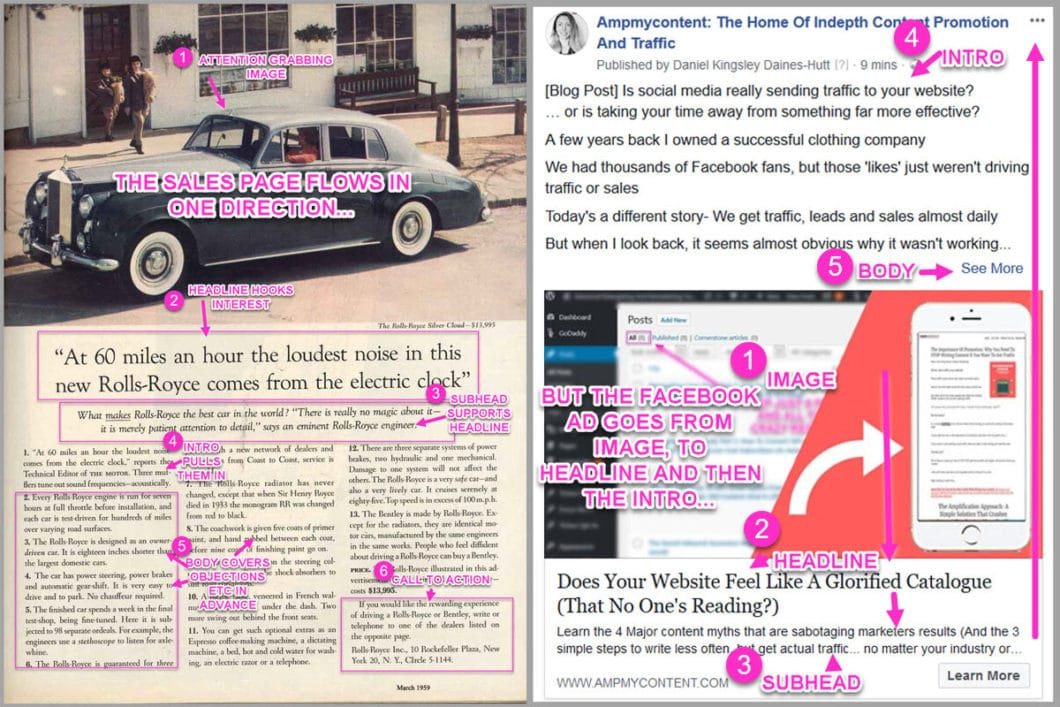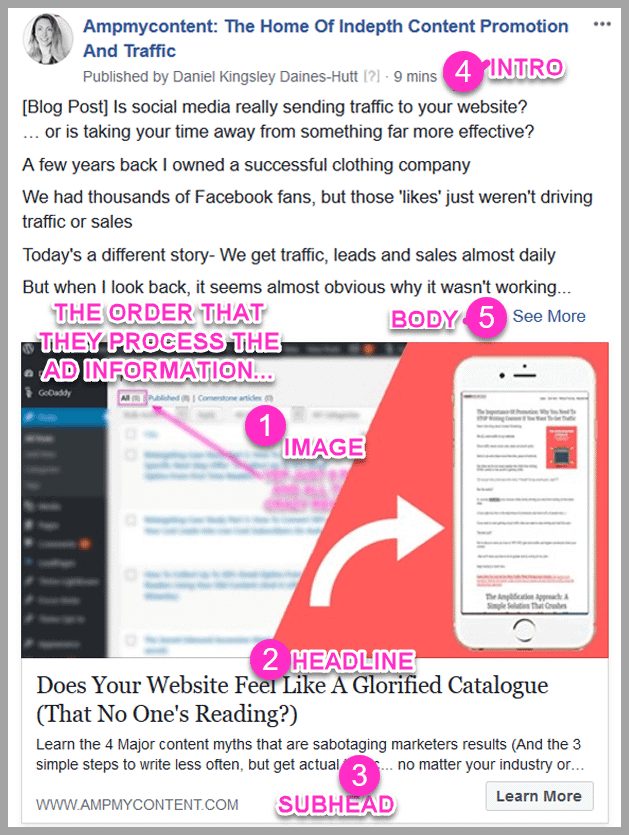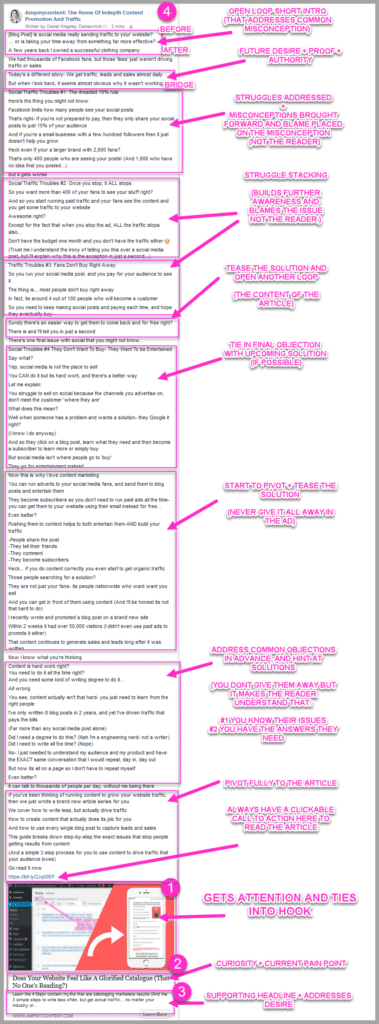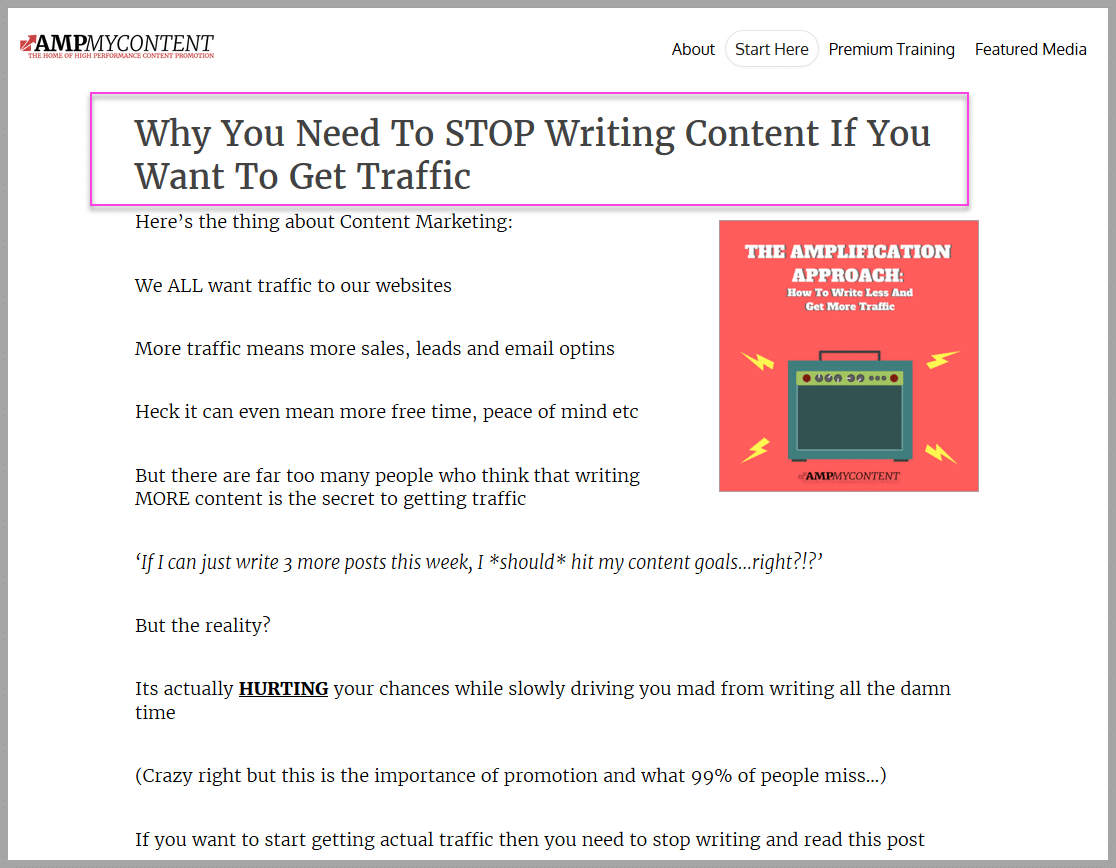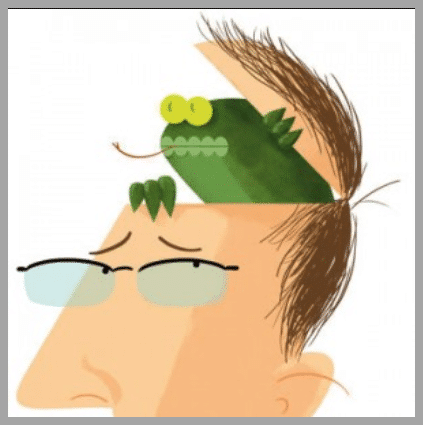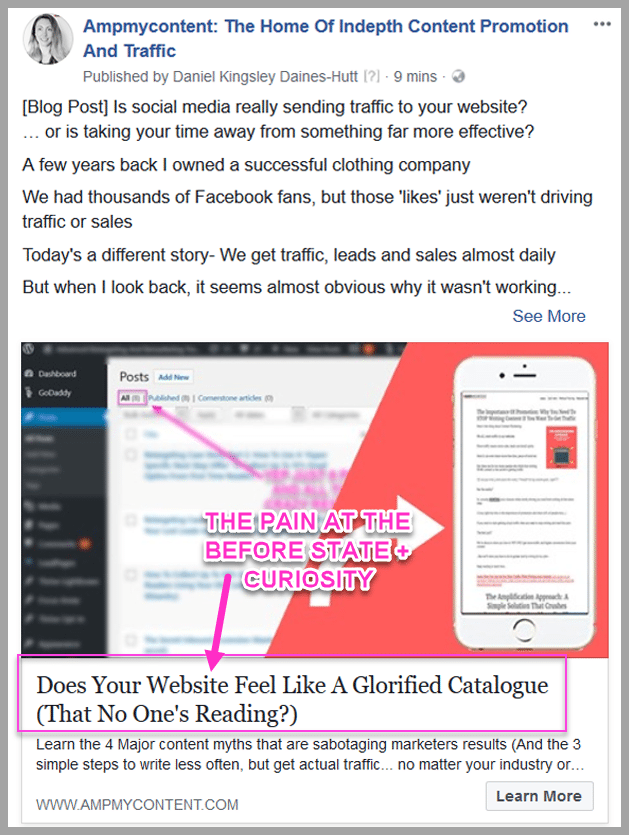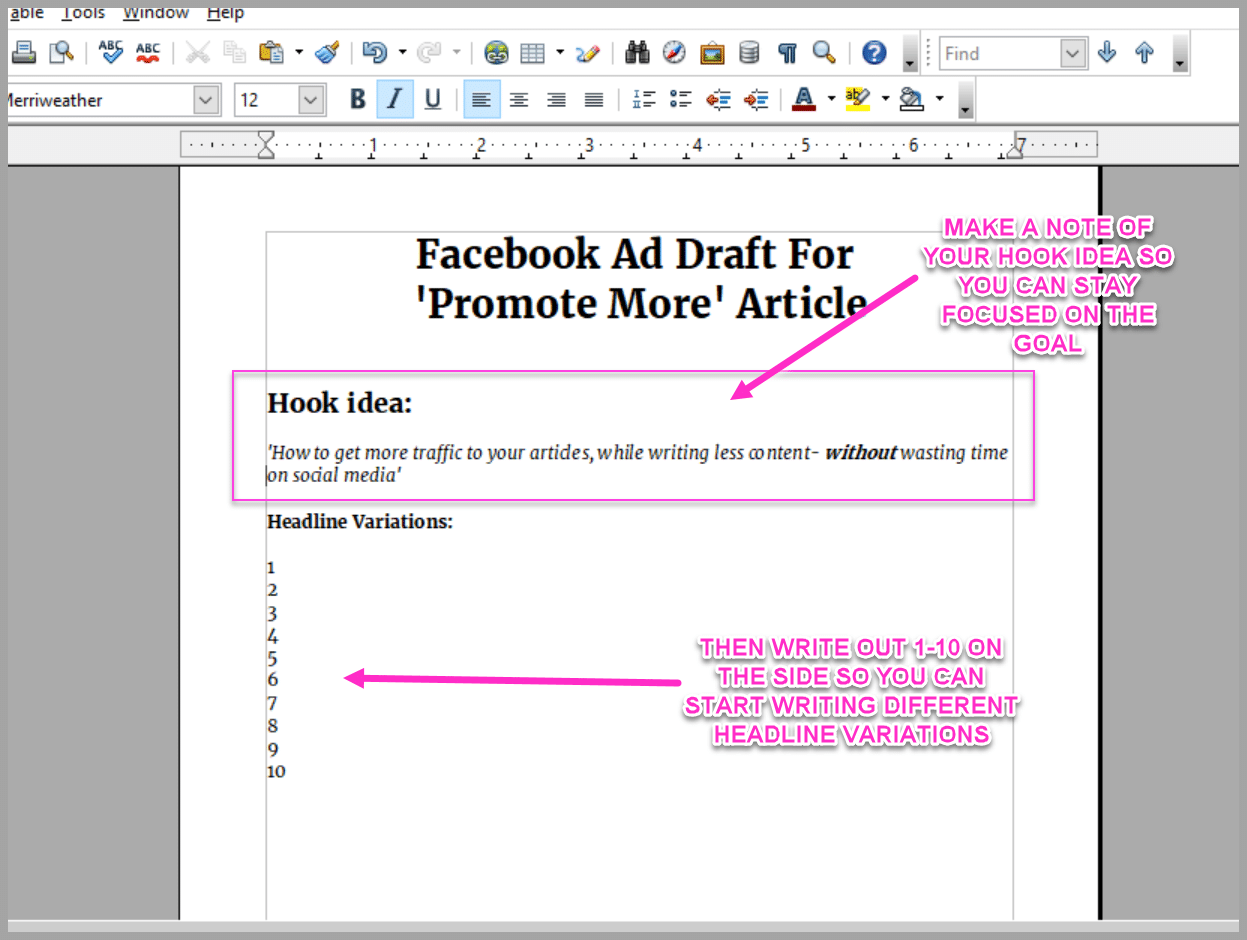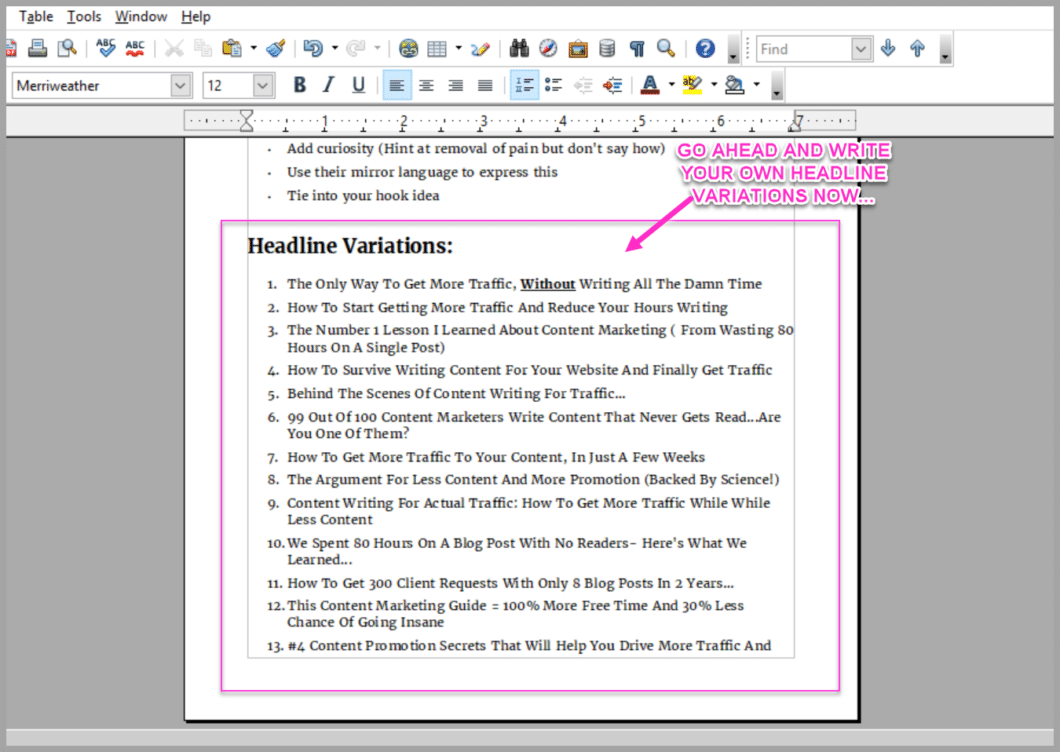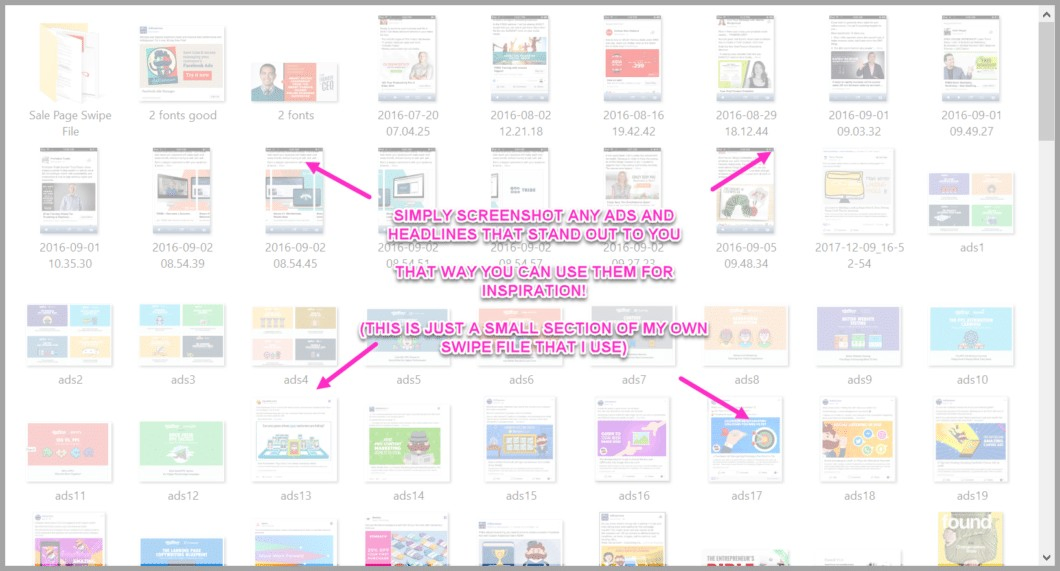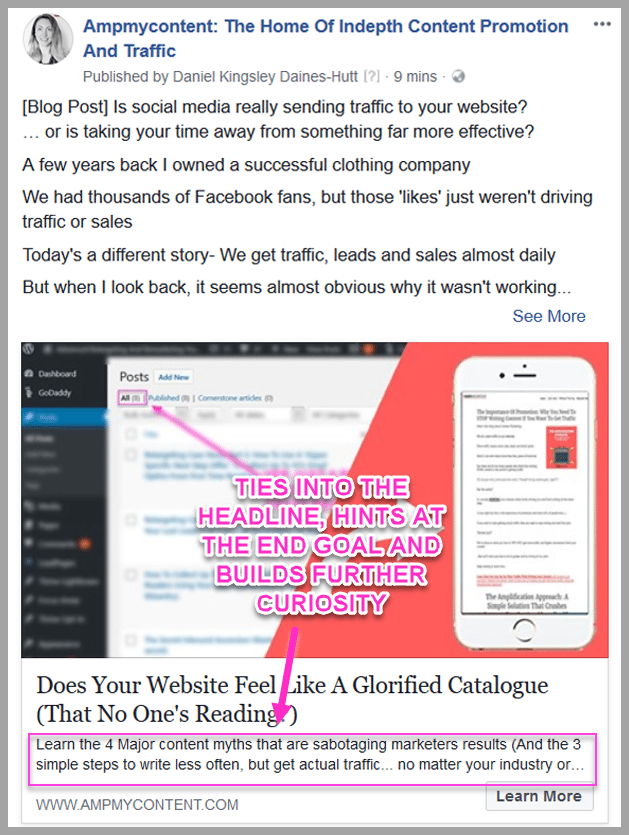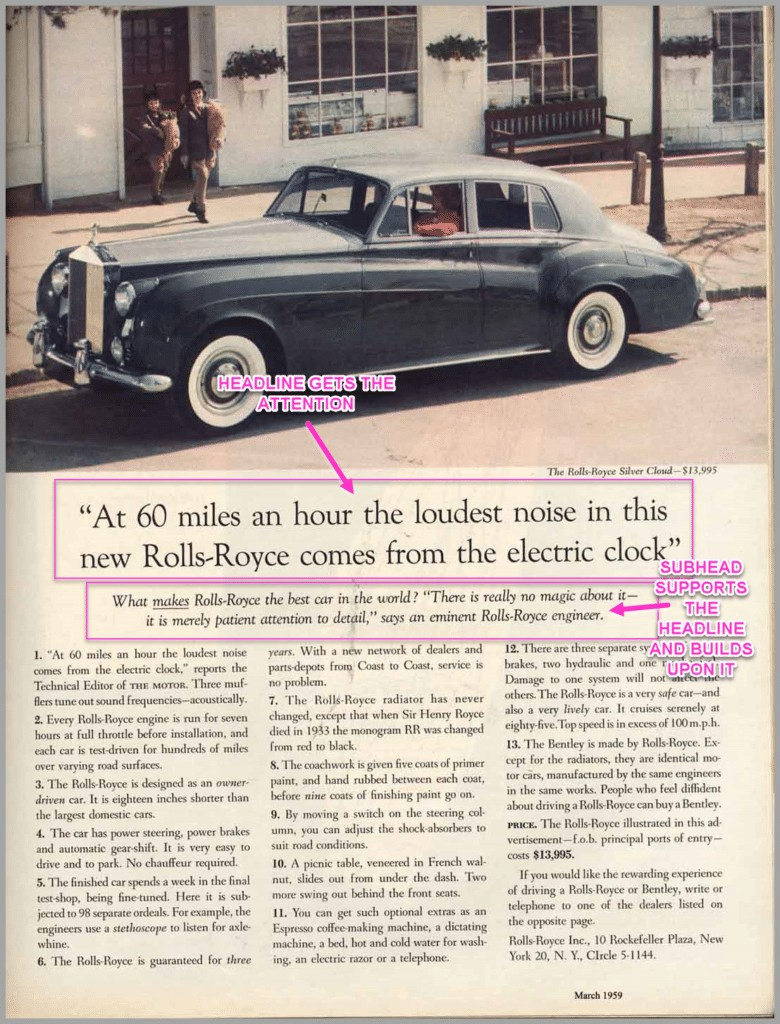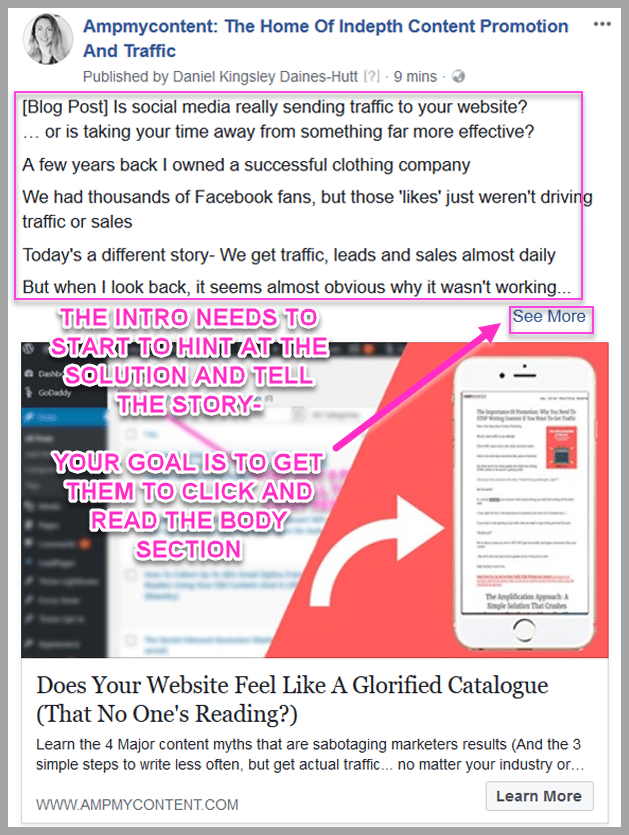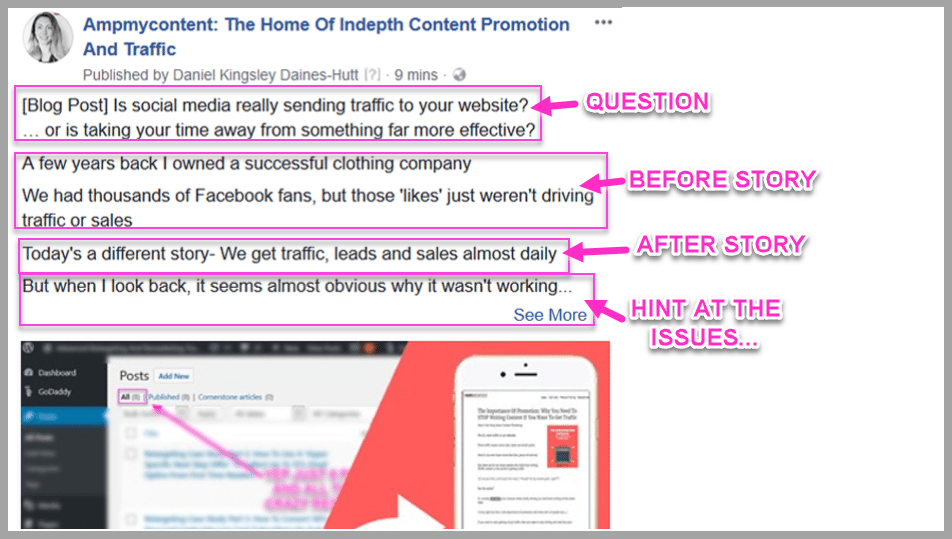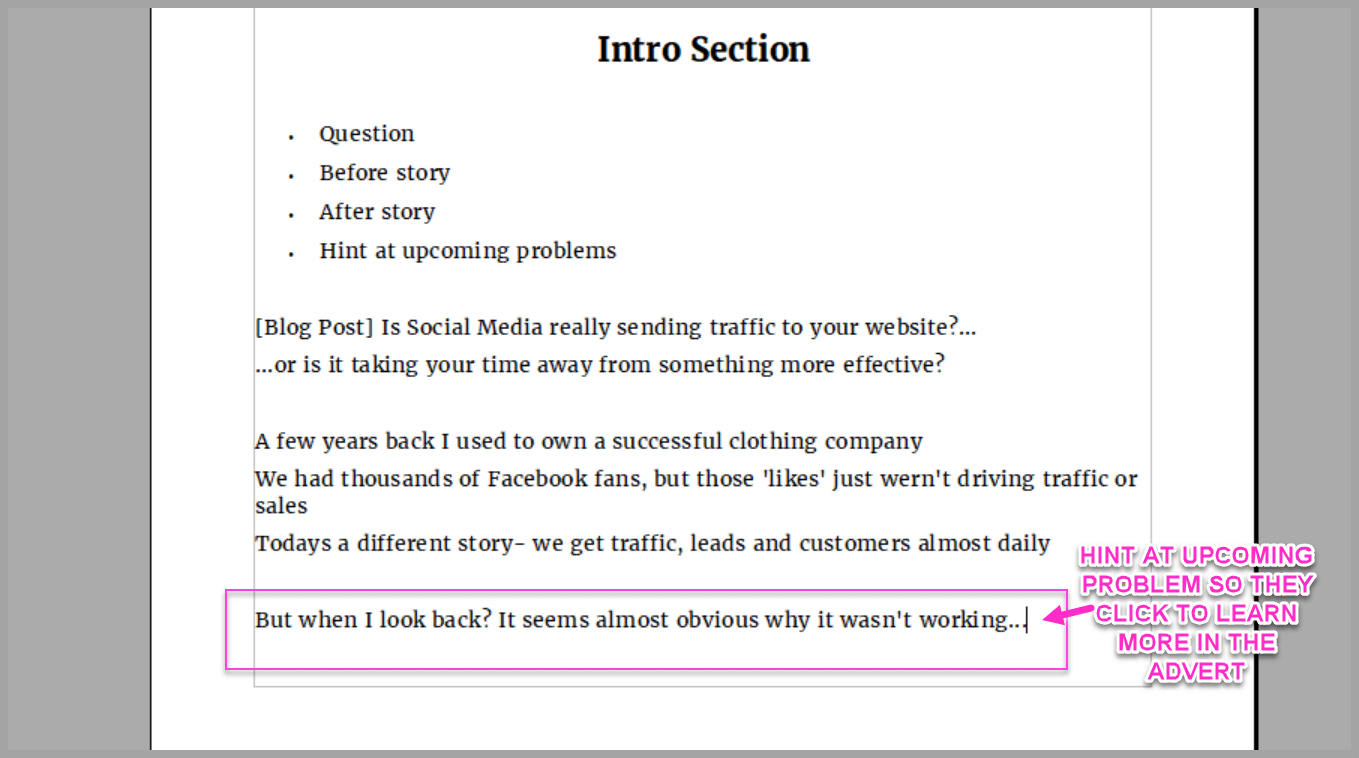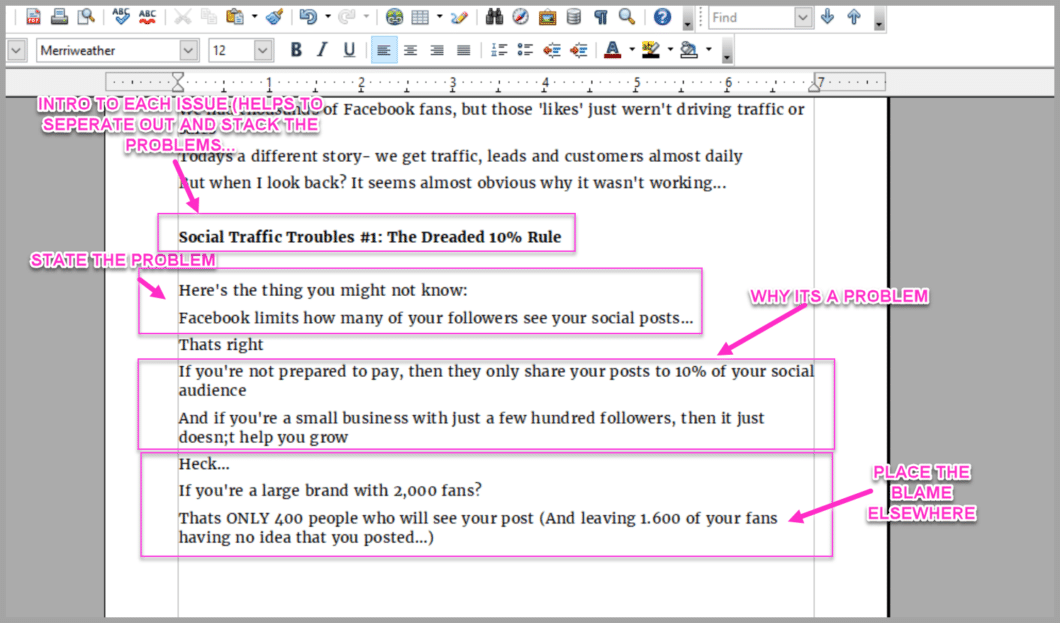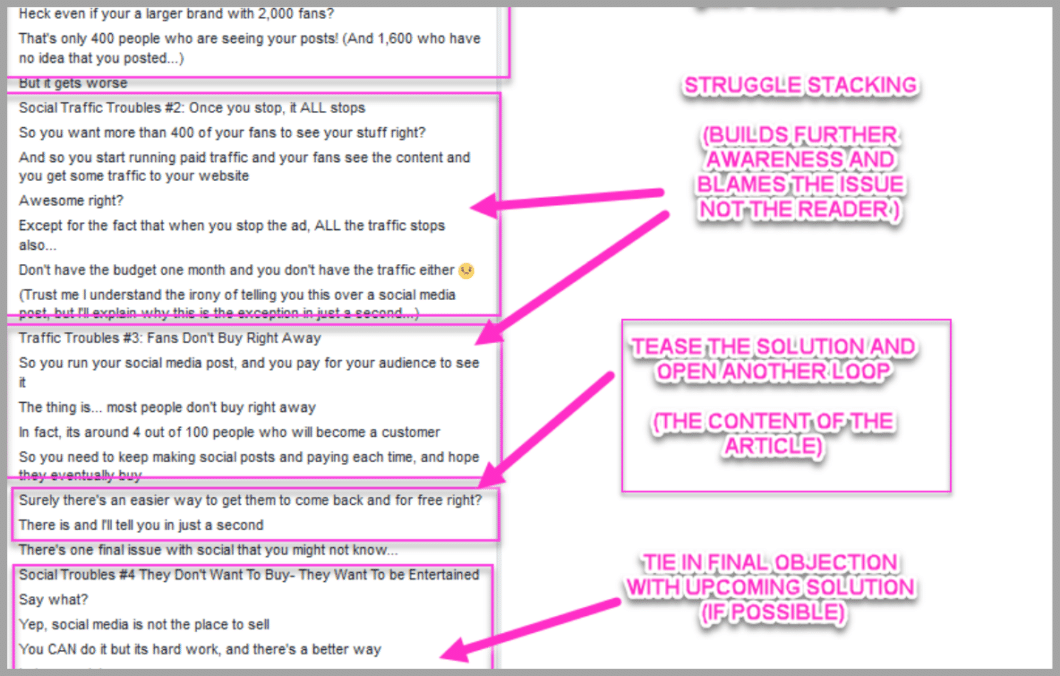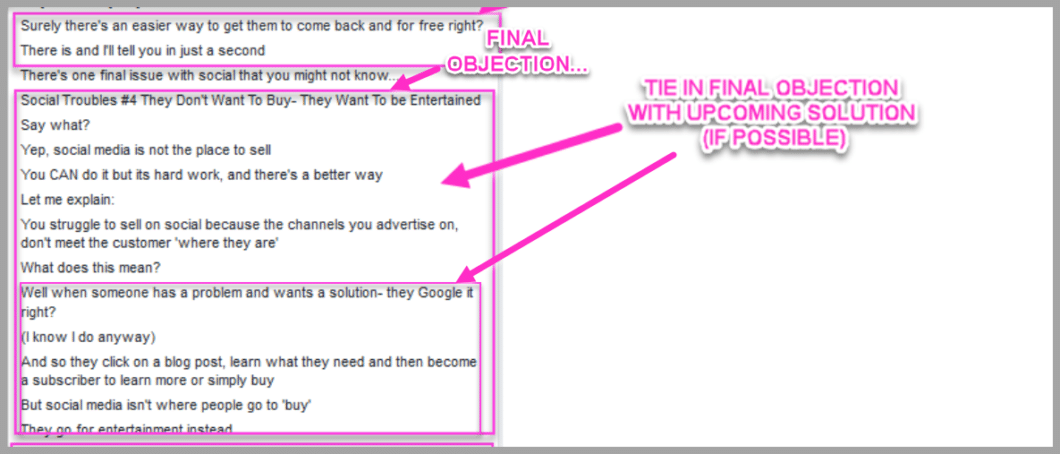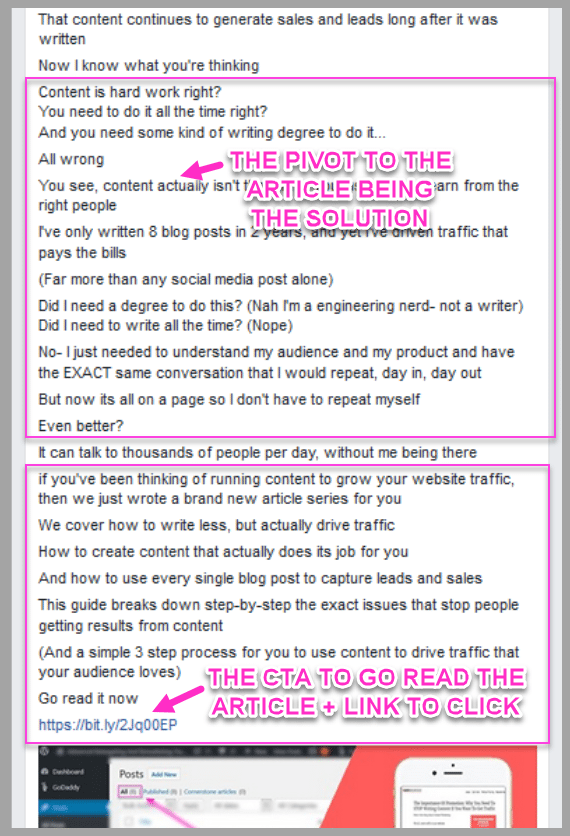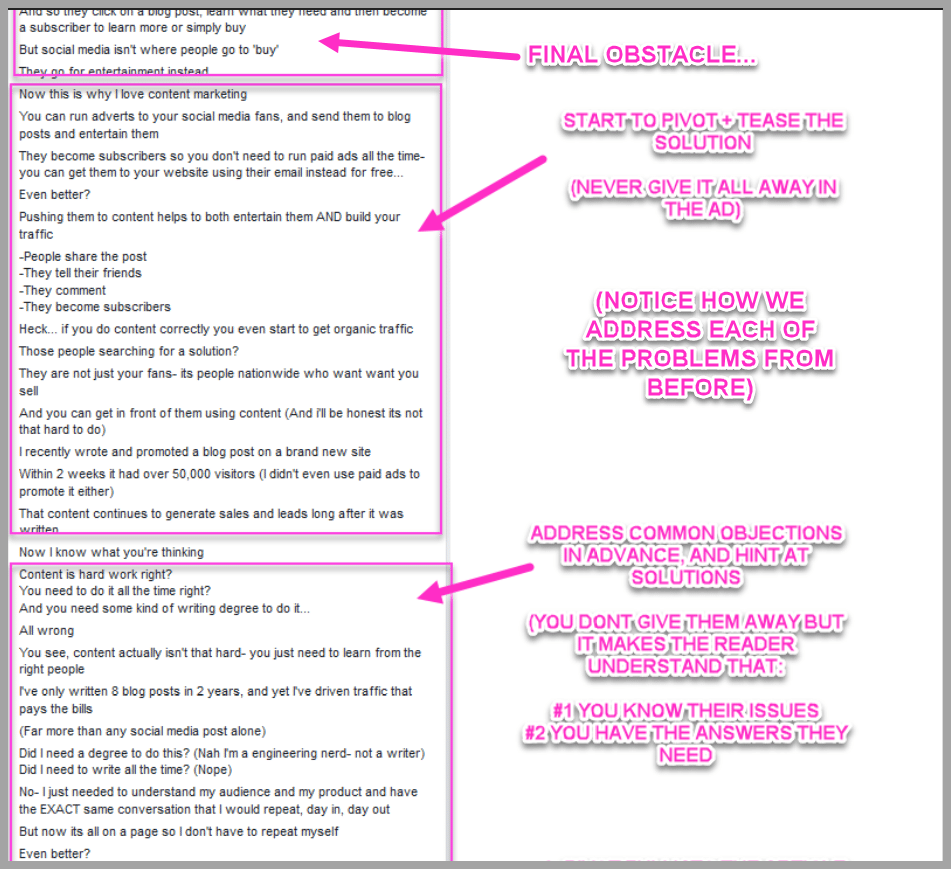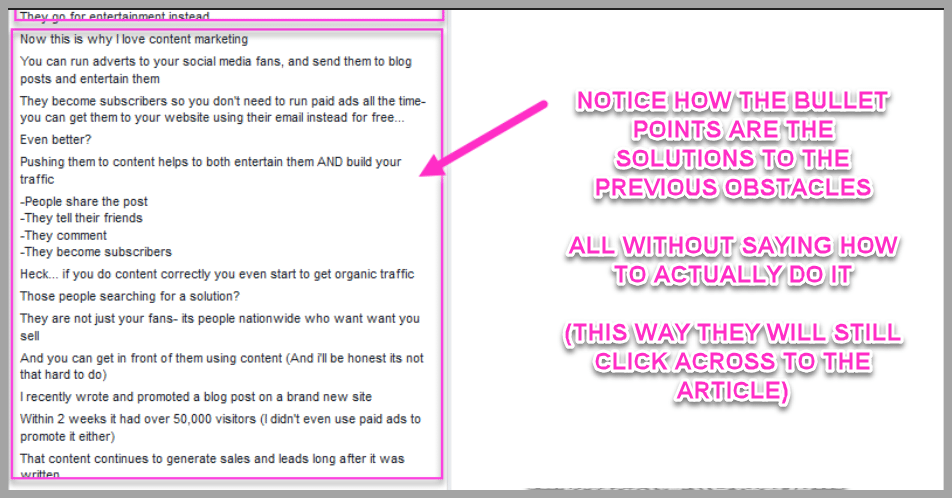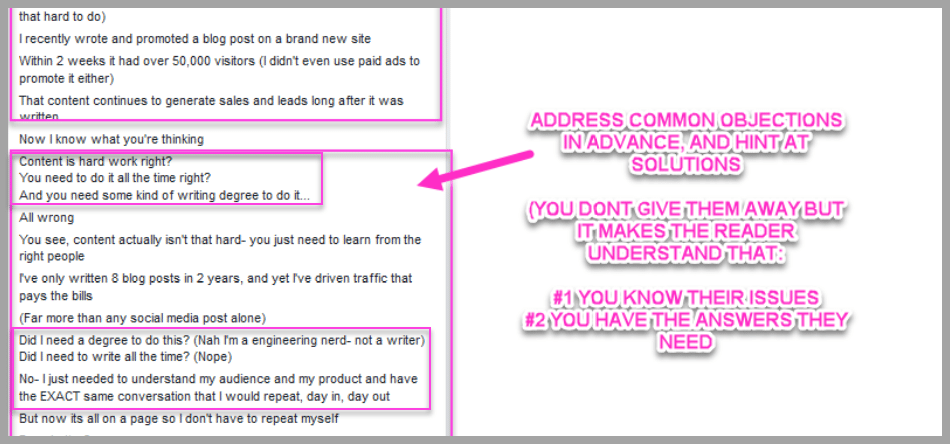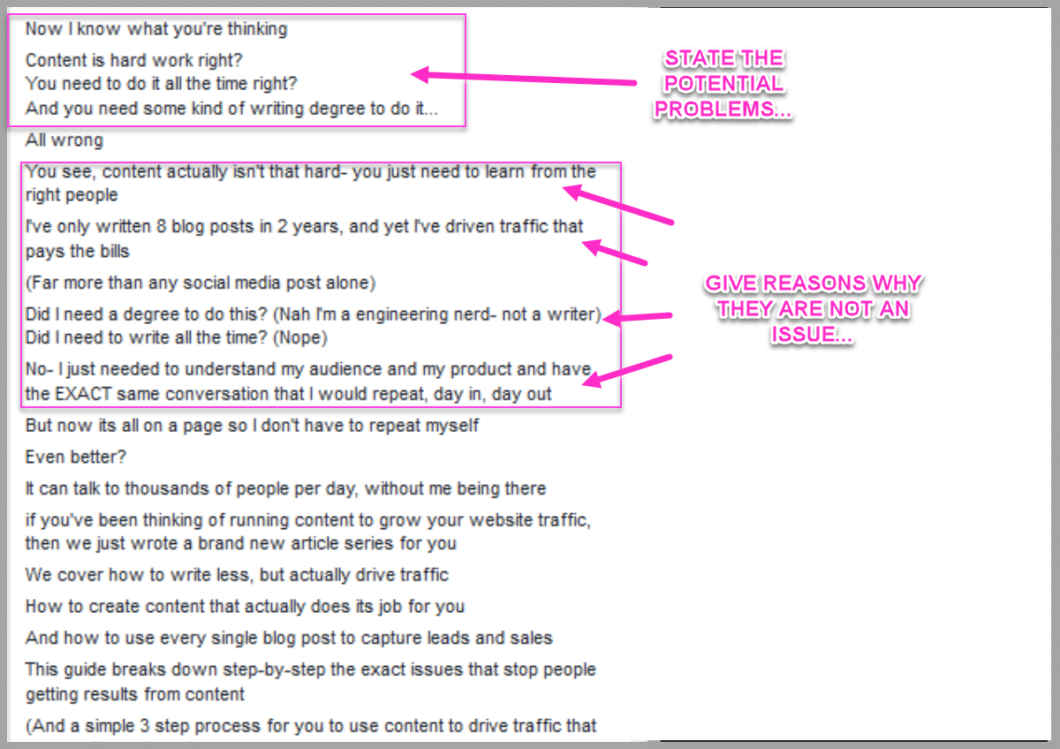Here’s the thing about advertising:
Most people think that a winning advert happens because of the image
Sure its important…
But the image only gets their attention
Attention alone is just not enough
It’s the actual words in the ad that gets the conversion
That gets them to take action…
If you want to create a high performing advert?
Then you need to write the ad first- and design the image later
Because once you’re clear on the message?
The rest all falls into place
In this chapter we’re going to walk you through step-by-step how to write high converting ad copy that gets more clicks and traffic than ever before
Keep reading to learn how…

 |
 |
|---|---|
 |
 |
 |
 |
 |
 |
Ad Copy Masterclass: How To Write Ads That Convert Cold Audiences
Most people assume you need warm traffic to grow your audience
They would be wrong…
You can grow from a cold audience- you just need to know how to write an advert for them
That’s right
Cold audience ads are slightly different to a normal ad…
They’re not more difficult to create, they’re just longer than normal
That’s all
Why longer?
Because that cold audience is much further ‘removed’
They may not even know their problem yet…
Your goal is to help them understand and connect, so that they want your content
Remember:
Marketing is just connecting the dots
Speaking to your audience ‘where they are now’, and then helping them see that your content is what will help them get where they want to be
The best part?
Because you did you research in the last chapter… you can write profitable ad copy, EVEN if you’ve never written an ad before
The 2 Simple Steps To Writing High Converting, Cold Ads
Yup
Just 2 steps…
Step #1: Come up with a ‘Hook’ idea that will appeal to your audience
Step #2: Write each part of the ad
That’s all there is to it
You simply go into your research and look for your audiences problems and goals
This will help you find an idea, or ‘hook’ that will appeal to them
Once you have that?
Its just a process of writing each part of the advert!
The only thing with Facebook ads?
The ‘order’ of the ad is a little messed up…
How A Facebook Advert Is Consumed
Its important to understand how a Facebook ad is laid out
In this guide, you’re going to use ‘News feed’ ads to promote your article…
Why?
Because they’re simple to make, have a nice large image, and allow more text
This means they are a perfect starting point for attracting a cold audience
(That being said, the methods and process we’re covering will work with any type of Facebook ad. You can simply adapt them to fit)
So why care about how people consume an advert?
Simply put?
It affects how you write it…
Let Me Explain:
A Facebook advert, follows similar principles to a sales page
In a sales page:
- The Image attracts their attention
- The Headline stops them in their tracks and helps self identify- with a goal, an interest or a pain point
- The Sub Head supports the headline, and helps build the desire and interest to stop the scanners in their tracks
- The Intro pulls them into the ad copy
- The Body weaves a story with objections, proof, misconceptions, struggles, villains, heroes and more
- Finally, the Call To Action gets them to take action
Not only that?
But it does it in a specific order
(And its like that for a reason)
Why?
Because the order that you communicate information in your advert, can totally affect how the reader responds
The exact same information but in the wrong order?
No joke-It can be the difference between a winning ad or zero clicks
But the problem with a Facebook advert?
The order is broken up a little bit…
You have
- The intro at the top (With a link to click and learn more in the body section)
- Then the image
- And below that you have the headline and subhead
Wheres the body section and call to action!?
Heck the entire advert is all out of order…
Crazy right!
So why care?
Because if you didn’t know this, then you might assume that your customers read the ad from top to bottom…
(i.e They would read the intro first, then see the image, etc)
Guess again
People consume your ad in the same order as they would on a sales page
Here’s how it works:
- The reader scans through their news feed and an image pops out to them and gets their attention
- Then they look at the headline underneath the image, to see if its worth their time. If it resonates, they start paying attention and read the sub head
- The sub head supports the headline and builds curiosity and desire
- Then they look up above the image and see the first few sentences of the introductionThe intro has to be so compelling that they click to read more, and you pull them into your ad copy…
- Once they click to learn more, the ad text expands to show more. In this section, the body of the ad then bridges the gap and educates them so they see your new article as the solution
- The CTA in the advert gets them to click across and read the new article
Can you see why its important to know this?
When you understand the flow that your audience reads your ad, THEN you know what to write WHERE, and in what order to write it in…
The best part?
Now that you know this, you can pretty much template out your ad writing
- Take your research
- Answers questions, and suddenly?
Suddenly you have a killer advert that drives conversions…
Step #1: Plan And Create Your ‘Hook’
Think of your ‘hook’ like your end destination
It’s the idea that you base your entire advert around…
The idea that attracts your audience
By knowing your hook before you write, it makes it much easier to reach your destination
So how do you come up with your hook?
You just need to answer a few questions…
- Who is the target reader?
- Where are they now?
- Where do they want to be?
- What do they know?
- What do they need to know, to be ready for your new article?
- What objections and frustrations do they have to overcome?
Good news?
You already have the answers to these questions!
You just need to find them inside your research…
You should have transcribed your interviews at the end of the last chapter
Go ahead and read through it
You’re looking to find some kind of ‘connection story’
Some way to help bridge that gap between where there are now, and where they want to be
With a cold audience, there are usually a few problems that are stopping them
This is a good thing
Why?
Because once you understand your audience, your hook can be as simple as:
‘How to get x goal (after state), without pain point (before state) while avoiding objections/frustrations’
Easy right?
For Example
I recently wrote a new article on why content promotion is more important than just writing more content, if you want to get traffic
I had some rough ideas of the audience
They needed to:
- Have a website
- Care about traffic to their site
- Be writing content
- Struggling to get traffic from that content
Then I interviewed people who met this criteria…
Jason writes and promotes content to his Facebook page
He gets a lot of traffic at launch, but gets very little ongoing
From interviewing him and other’s, I found that:
- The majority were writing great content, but not getting traffic
- They hadn’t done much promotion (and so would just write something new each time)
- They had tried some basic promotion, but didn’t get results
Now I knew where they were, where they wanted to be, and their pain points
This helped me come up with a very rough hook…
‘How to get more traffic to your content, while writing less often’
Easy right?
That’s all your hook needs to be
Just a clear idea or narrative, that you use to structure your advert around
Once you have it, then its time to write…
Step #2: Write Your Ad Copy
Go ahead and open up a new Word document
Why write in Word first, rather than directly in Facebook?
Mainly because its easier to avoid distractions
(You can paste it across when complete)
Lets get into it…
Writing The Headline (Before State)
Almost everyone is motivated by pain
Its not our fault
Our brains are hardwired to look out for things that might hurt us, even emotionally..
Why care?
Well the image stops them scrolling right?
…But its the headline that gets them to pay attention
By leading with their pain, it gets them reading
How To Create Your Headline:
So the goal of your headline, is to talk to the audiences ‘before’ state
To address their pain so that they start reading
And the best way to write a killer headline?
Practice…
You’re going to write 10 variations of your headline
Why?
Because its hard to pluck a winner out of thin air on your first try
Also?
You’re going to be testing these different headlines, to find the best performing one later on
(And to do that, you need a few variations)
So go ahead and open up your Word document:
Start by writing your hook idea at the top of the page
(This will help you stay focused on the end goal when writing)
Then go ahead and add the numbers 1-10 on the side
Top tip?
Never try and write a headline from scratch
…instead use Headline templates and swipe files
I’ve added some headline examples below that you can re-tweak to use for inspiration
Headline Examples
- The only way to (do something they want) without (Doing something they don’t want)
- How to (Do something difficult) in (X period of time) without (pain point)
- How to (Do something difficult) in (X period of time) or (promise)
- (X number of) lessons I learned about/from
- How to survive your first (X)
- (X number ) out of (x number of target audience) can’t/don’t get (X) Are you one of them?…
- How to get (X goal) with (X method) step-by-step
- This (article topic) = (Specific benefit) Case study/new data/new guide
Easy right?
You’ve got a few examples that you can use there
Simply use them for inspiration and edit to meet your hook
For Example:
Here are a few headlines I wrote recently for our ad campaign using the same templates…
- The Only Way To Get More Traffic, Without Writing All The Damn Time
- How To Start Getting More Traffic And Reduce Your Hours Writing
- The Number 1 Lesson I Learned About Content Marketing, From Wasting 80 Hours On A Single Post…
See how they fit the templates, and my hook idea?
Easy right!
Now go ahead and write ten of your own headlines like so…
The more variations you write, the better chance of finding a killer idea
Want more headlines templates you can use?
Check out this resource by Copyhackers for more templates
Alternatively?
You can start making your own swipe file of ads
Simply screenshot ads with great headlines, and save them to use later…
Even easier?
Use swipe files made by other people…
Here’s a great one by the guys at Leadpages
So that’s the headline done
Great job!
Because its tied into your research, it should get the attention of that colder audience
Now you have their attention and pain, its time to connect them with their end desire…
Writing The Sub Headline (After State)
The subhead creation process is almost identical
The main difference?
You want to connect with the ‘after state’ that the audience wants to achieve
You’re basically saying:
“Do you have this pain (Headline), do you want this pleasure/or goal? (Subhead)”
This helps them sit up and pay attention…
How To Write Your Subhead:
The headline is a catchy statement
The subhead adds more information to then support the headline
For Example
Take a look at the Ogilvy Rolls Royce advert again…
Notice how the subhead supports what was said in the headline, but then builds upon it
Your goal when it comes to the sub head, is to try to include these 4 things:
- Tie into headline and hook
- Talk to the after state or desired goal
- Build curiosity to read the intro section
- Use the audiences mirror language to describe these things
Simple right?
This way the headline talks to the pain and gets the attention and curiosity…
…While the subhead supports and adds more detail around the end goal (but also builds further curiosity around the headline)
Go ahead and open up your Word doc again
This time you need to write a supporting subhead for each headline you’ve written…
Try and write a variation for each headline
Again, this gives you variations to test and find a winner later on
If you get stuck, remember to:
- Talk about the end goal
- Talk about the usual objections
As you write a few variations, you’ll see them improve…
At this point, your advert is doing 2 things:
- You’ve made their pain real, and got their attention
- Then you built their interest and tied it to their end desire
Now they want to know ‘how’ to do this
And so they look above the image, and read the intro…
Writing The Intro Lead
The intro is super important
Why?
Because you only get a sentence or 2 that appears above the image
This means that your introduction needs to be compelling enough for them to click that learn more button…
It should start to tell a story and hint at the solution that you talked about in your headline
By doing this it builds curiosity to click…
How To Create Your Intro
People are drawn to stories
It helps us remember, it keeps our attention and it helps us connect emotionally
Because this is a cold audience, you need to take your reader on a journey
From where the are now, to where they need to be
And do to that, you need them to feel like they are part of a story
The only problem?
Facebook doesn’t like you talking to the audience directly
(You can’t call out to a problem and ask them if they have it)
So what can you do?
You simply share a personal story, of either yourself or a reader, that reflects the same struggle the audience is going through…
That’s why you interviewed your audience in the last chapter
It helps you understand their struggle and goal, and it helps you connect with it emotionally
You probably have a story of your own that feels similar right?
You can use that story to help write your new ad
This helps the audience connect with you personally, along with their own issues
Your intro needs to:
- Use short sentences to get them reading
- Ask a question to get their interest
- Start with a story of where you were before,
- Then talk about where you are now (This helps them connect with you and wanting to be where you are also)
- Then build their curiosity, by hinting at the problems that are stopping them
Easy right?
Head back into your Word document
Go ahead and create an ‘intro section:
I find it helps to make a note of the intro sequence before I write it
Start off by asking a question that’s relevant to the hook and headlines that you just decided on…
Preface that with the words ‘[Blog Post]’ so that people know this advert is linking to an article
Once you got their interest with the question, its time build on it
Start by telling the story of your before state
What life was like, in context to the question and hook
(This helps them see that you have been where they are right now)
Then write about how your life is now that you got past that problem…
Easy so far right?
Its pretty much a B.A.B sequence
(Before, After, Bridge)
“I’ve been where you are, I’m now where you want to be, and here’s how I got there”
So now they’ve connected with you, they want to know how you got there
But you can’t explain it all in a sentence…
You need to build up the curiosity so that they click the ‘read more’ button
At this point, you need to hint at the problems that were stopping you from getting from there
(Those same problems that came up in your audience research)
Why hint at it?
Because if you’re audience cares about these goals then they will want to know whats stopping THEM…
They want to know how to ‘bridge the gap’
Once you’ve wrote those your introduction, its time to pivot into the body section…
Writing The Body Section
The body section has a few goals:
- To educate the reader to the point where they are ready for your article
- To overcome obstacles or excuses in advance
- To stack the pain points while placing blame on the problems
- To build interest and desire for the solution
Its easy to do
The body section is the bulk of the advert
It follows a set pattern and ties directly into your introduction that you just wrote…
The Introduction Sequence
- Before state story (Intro)
- After state story (Intro)
- Hint at upcoming problems that are stopping them (Intro)
At this point the intro has hinted at the problems
Now the body carries on and starts talking about them…
The Body Section Sequence
- List out issues one by one- what they are, why they stop you, any misconception behind them, and place blame away from the reader (Stacking the pain points that you found in your interviews)
- Tease the solution that got you past all the problems (Upcoming CTA to your article)
- Final obstacle and problem
- Pivot to the cta section
It’s much easier than it sounds
It looks like this:
Notice how it follows a set path?
So you already have the before/after intro
Now you need to write each part of the body section…
Obstacle Stacking
During your research, you’ll notice common objections or problems come up
Your goal here is to address those issues and fears, in advance, one at a time
You need the audience to:
- See the problem
- Learn why its a problem
- Place blame elsewhere
Bringing up the problem makes their pain real and gets their attention
It helps them see that you understand their situation
But super important?
ALWAYS place the blame on an external issue…
Give each obstacle a mini headline so that it stands out
State why its a problem, and place the blame on an issue or a common misconception
Remember:
Its VERY important never to place the blame on the reader
Go ahead and write down the first few obstacles in your Word document
Follow that same pattern
- What is the problem?
- Why is it a problem?
- How is it stopping them?
You only need to do around 3 to 5 of these problems
Before you cover the last problem, its time to build that curiosity…
Tease The Solution
You’ll usually find that the reader has a few obstacles to overcome
This is good, because it builds up the pain
The more painful the problem, the more they want to take action
There’s one thing you need to do before you cover the final obstacle, and that’s to tease the solution
Why?
By doing this you ‘open a loop’ for the reader to learn more and keep reading…
Its just a simple sentence
You just hint at the article solution
“I’ll tell you how I got past this in just a second, but before then there’s one more thing that was stopping me…”
Because that pain is made real, they really want to solve it
And by teasing the solution it keeps them reading…
OK so now the tease is done, its time for the final obstacle…
The Final Obstacle
The last obstacle is a little different
Ideally you want the last obstacle to tie in with the upcoming solution that you’re about to pivot to
- State the problem
- Why its a problem
- Place blame on the issue, and hint at the solution
This way, when you pivot to the solution and call to action in a second, it fits it…
Simple right?
So once you’ve covered the final issue issue, its time to pivot to your article being the solution…
The Call To Action
So many people miss this out, and their ad suffers because of it
You’d be amazed at how many people simply don’t ask the audience to take an action
The goal here is to:
- Pivot to the solution (The article)
- Stack the benefits
- Overcome any new excuses
- Ask them to go read the article
You ALWAYS have to tell the reader what to do next
But like everything else, there’s an art to it…
Create Your Call To Action:
Our goal here is to get them to click the ad
That’s why its super important that the advert only hints at the solution covered in the article
You can say that it solves the problem you brought up…
…just don’t tell them HOW it solves it
Why?
Because if you tell them how to get past the problem in the advert, then they have no reason to go read the article!
So lets break it down…
Pivot To The Solution (The Article)
Super easy
Because the last obstacle tied into the solution, its very easy to pivot into your article…
Easy right?
You simply state the final problem, then hint at the solution in the article
“Now this is why I love x solution…”
Go ahead and write your pivot sentence back in your Word document now
It should follow this pattern:
- State the problem
- Why its a problem
- Hint at the solution
Then once you’ve brought up the solution, you start to stack the benefits…
Stack The Benefits
People are weird
You had to stack the pain before, so that they would care about the solution
Now?
Now you need to stack the benefit…
At this point they are thinking about much effort this will take
The more benefits they see to taking action, the more likely they are to click across
The first thing to do is to hint at how the article solves each of the obstacles that you’ve brought up
Make sure to hint at it or say that it solves, them- just don’t tell them how to do it
(That’s the goal of the article, and if they know in advance, then they won’t click…)
Once you’ve helped stack those benefits, a weird thing happens
Most people when they finally see a solution to a problem?
They come up with new excuses about why they can’t follow through…
Overcome New Excuses In Advance
So a big part of sales, is removing objections in advance
Its the same for anything
People will come up with new excuses as to why they cant do it
Your goal is to bring up those excuses in advance, so you can help them get past them…
Easy right?
Go across to your Word Document
- Bring up the potential objection
- State why its not an issue
Do this for the top 2 or 3 of the biggest potential objections
It doesn’t have to be indepth reason either
It can be as simple as
“You might be thinking this is a problem, but its not because X reason”
Easy right?
Once you’ve done that, its time to ask them to click…
Ask Them To Go Read The Article
The final part of the advert
By now you’ve got them excited to take action
Here you:
- Tell them about your article
- Stack further benefits of whats inside the article
- Ask them to click
- Give them a link to click
Simple right?
To Do Now:
Boom
That’s your ad copy all finished (Along with variations)
Great job!
Go ahead and save the document, and drink any celebratory beverage of your choice
That’s the hardest part of the advert finished!
You’re going to copy and paste this into your ad manager later on, but for now?
Now its time to design the image, aka the ‘ad creative’…

 |
 |
|---|---|
 |
 |
 |
 |
 |
 |

